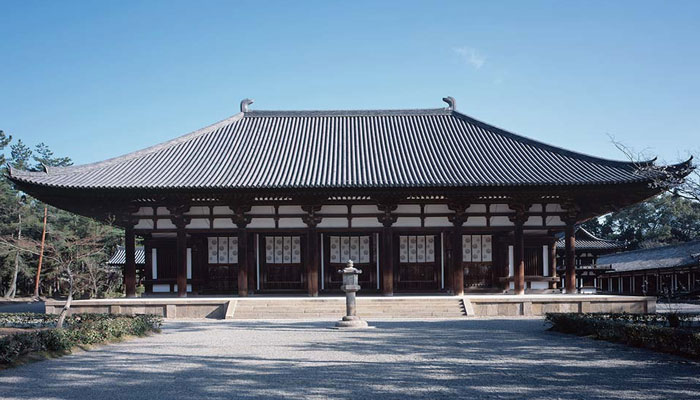17-year-old Canadian questioned in Japan for ‘defacing’ Unesco-listed temple
If teen is found in violation of Japan’s Law for Protection of Cultural Properties then he will be prosecuted
July 10, 2023

Japanese police brought in a 17-year-old Canadian tourist for questioning after the teenager was accused of carving a name into a wooden pillar at a Unesco-listed temple in the historic city of Nara, Japan, reported CNN.
As per the American media outlet, the incident took place at the centuries-old Toshodaiji Kondo temple complex on the afternoon of July 7.
“On the southwest side of Toshodaiji Kondo, there are wooden pillars supporting the roof,” a police official told CNN. “On the pillars to the side, the boy carved ‘Julian’ on a wooden pillar about 170 centimetres above the ground with his nail.”
The publication reported that a Japanese tourist saw the Canadian teen defacing the pillar and told him to stop. However, when he did not listen, the Japanese tourist informed the temple employees of the teenager's alleged actions.
Soon after, the temple staff alerted nearby police, and the teenager was taken in by the law enforcement agency for questioning the following day, the official told CNN.
“The boy admitted his act and says it was done not with the intent of harming Japanese culture,” the official said. “He is now with his parents, who were with him when the incident occurred.”
The official said that the police will continue investigating the incident, and if the teen is found in violation of Japan’s Law for Protection of Cultural Properties, then he will be referred for prosecution. However, he will not be detained.
Historic Monuments of Ancient Nara
Toshodaiji Kondo, an 8th-century temple, is one of eight sites that make up the Historic Monuments of Ancient Nara, which was inscribed as a Unesco World Heritage Site in 1998.
“Buddhist temples, Shinto shrines and the excavated remains of the great Imperial Palace provide a vivid picture of life in the Japanese capital in the 8th century, a period of profound political and cultural change,” said the Unesco inscription.
The inscription states: “bear exceptional witness to the evolution of Japanese architecture and art and vividly illustrate a critical period in the cultural and political development of Japan, when Nara functioned as its capital from 710 to 784.”
Nara is a popular tourist destination and is a 45-minute train ride south of Kyoto.
In addition to the historic architecture, visitors come to experience the famous Nara Park, which is home to more than 1,000 free-roaming sacred deer.









